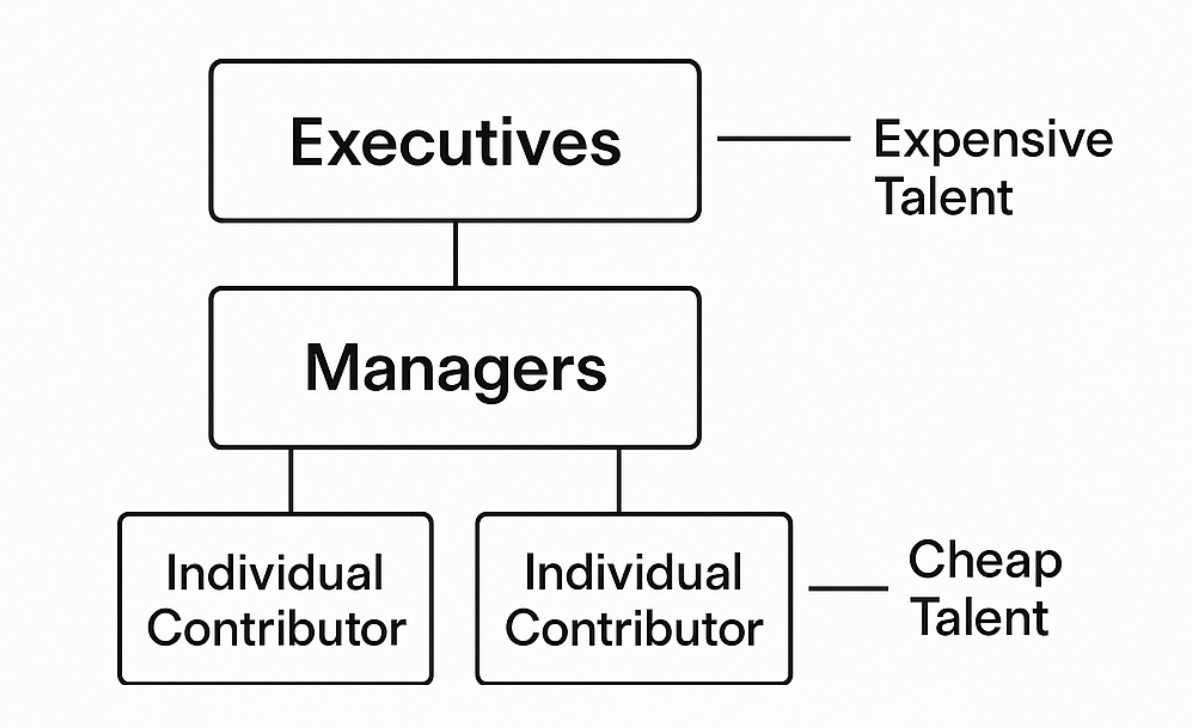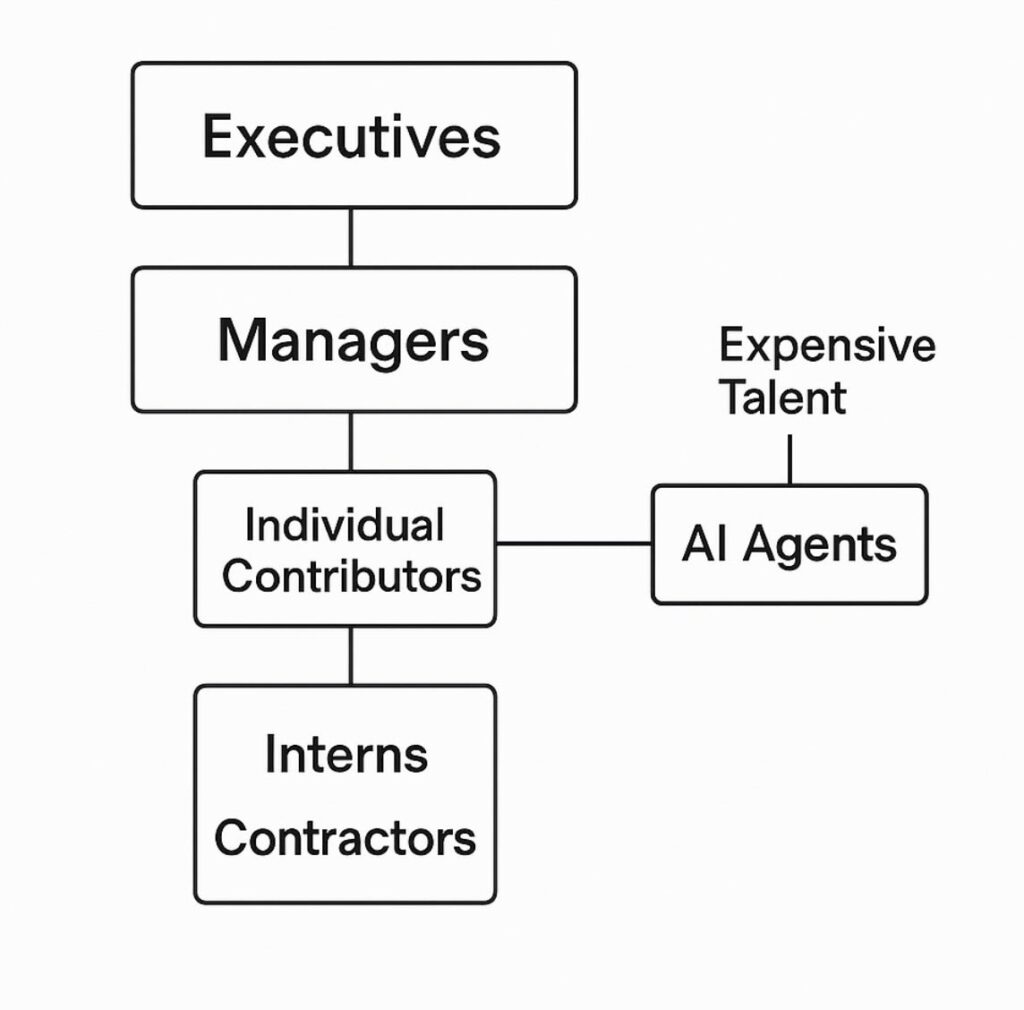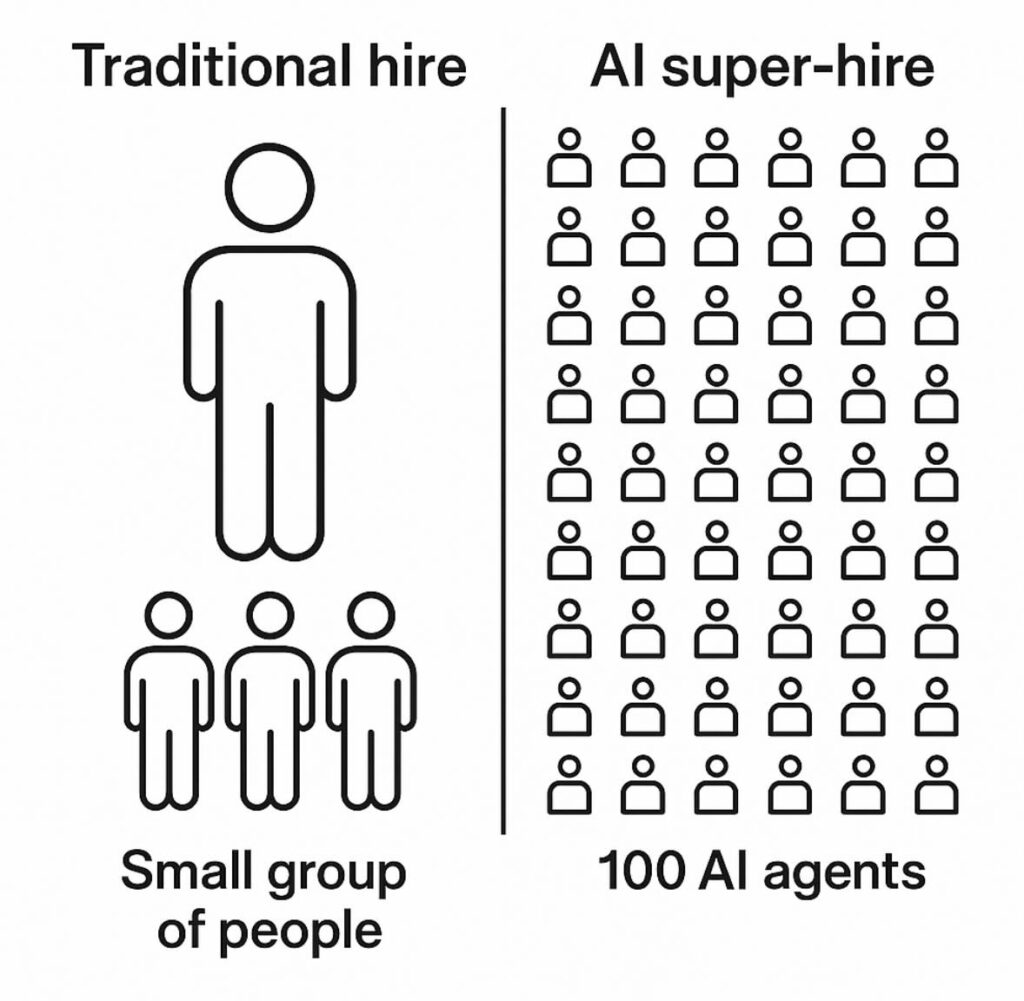The first startup I ever invested in ran out of money not because the product was bad, but because the founders thought scale meant hiring. Two people became five, then ten, then 20. And none of them knew how to ship without a meeting.
In the old model, that was normal. You raised money, you hired junior people, and you scaled headcount in parallel with revenue. If your team was too top heavy, you were warned. You needed cheap doers. You needed full time people who showed up every day, at the office, and put in 50-60 hour weeks.

That model is collapsing in front of our eyes. AI is replacing the bottom rungs of the org chart. And the new bar for hiring isn’t availability or experience, it’s leverage.
What the Data Is Telling Us
According to the World Economic Forum, 40% of employers plan workforce reductions due to AI. McKinsey reports that automation will impact 12 million U.S. jobs by 2030, with entry-level roles in data entry, accounting, and customer service being the first to go.
Meanwhile, elite engineers are commanding unprecedented compensation. Meta reportedly offered up to $100 million to poach researchers from OpenAI. Wired and WSJ confirmed that some offers exceeded $300 million over four years. This isn’t about salary inflation. It’s about betting on people who can replace entire teams. Well, maybe entire companies?
The New Shape of Work
The best AI-native operators can do more in five hours than entire teams used to be able to do in a week. One of my friends who is an engineer built a fully functioning SaaS product, backend, frontend, Stripe integration, in three days. No meetings. No backlog grooming. Just deep work and smart tools. And he’s not alone. Just look at Lovable’s Hall of Fame.
We are in this really awkward “in the middle” phase right now (to me at least). In this phase, companies can’t come full out and just replace entry level talent and ICs, but they need to start ramping up with expensive AI talent and investments to start the process.

These 10x team members will usually sit outside traditional org structures, because traditional org structures assume all the output comes from humans.
This is the shift that’s coming: full-time as a default is dying. Especially in high leverage roles. Executives are starting to admit it. A recent Forrester survey found that nearly 50% tech leaders believe time-based productivity metrics are quickly becoming obsolete.
From Headcount to Output
Instead of asking, “How many people do we need to hire?” smart companies should probably ask, “What’s the smallest team that can deliver this?”
That’s how companies like Anthropic, with fewer than 200 employees, are competing with Google and Amazon. Their retention rate? Over 80% at the two year mark. Because when you hire people who move the needle, you don’t need layers of management to babysit output.
Hiring used to be about filling seats. Now it’s about finding 10x people and giving them the autonomy to build. Well, that’s for starters. And more than that, it’s hard to see a world where entry level roles (and even internships) exist where people learn by doing manual and repetitive tasks.

I actually think we are getting close to the point where 10x people will actually create AI employees for your organization. And if your organization lives and thrives on people, than that “employee” is actually creating insane and outsized value for your business.
This is already starting to happen to the job market for recent college grads with little to no experience.
Why This Matters
If you’re leading a company today, the temptation will still be to hire traditionally. It feels safer to have warm bodies in chairs. But what AI is showing us is that leverage beats labor.
The end of entry level isn’t just a hiring trend. It’s a signal. The future will be built by small teams of highly leveraged builders who don’t need a ladder to make an impact.
And they won’t be cheap.
